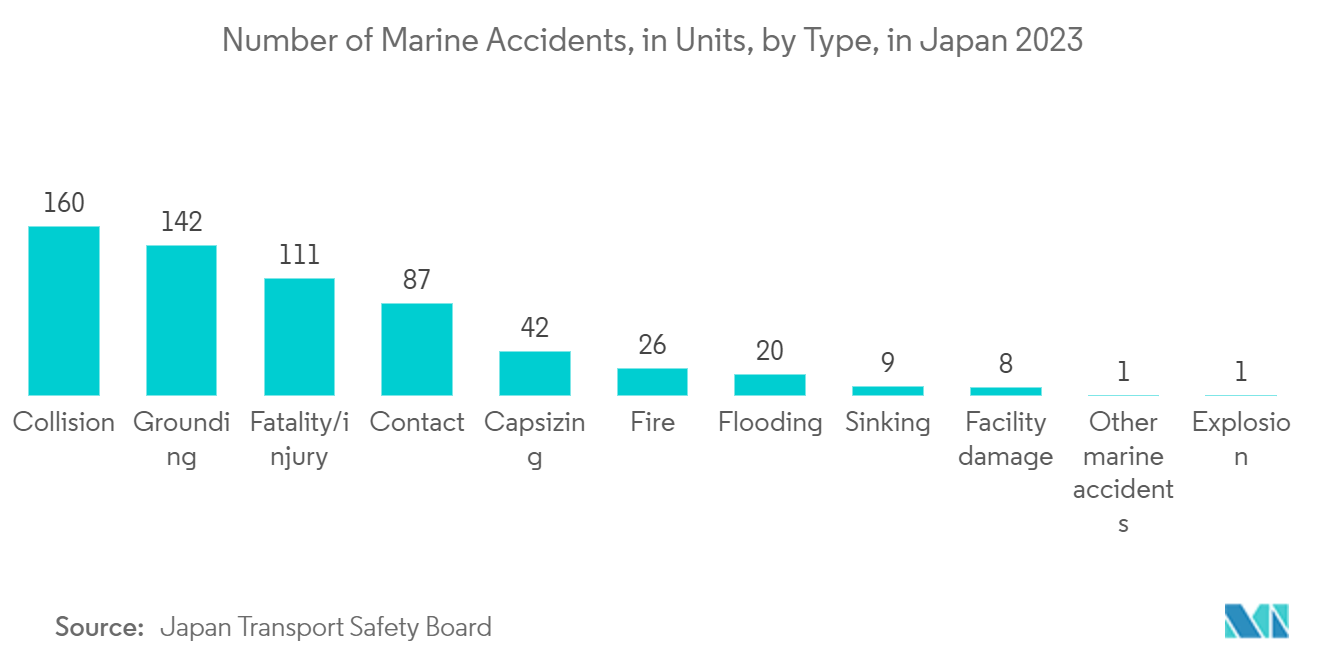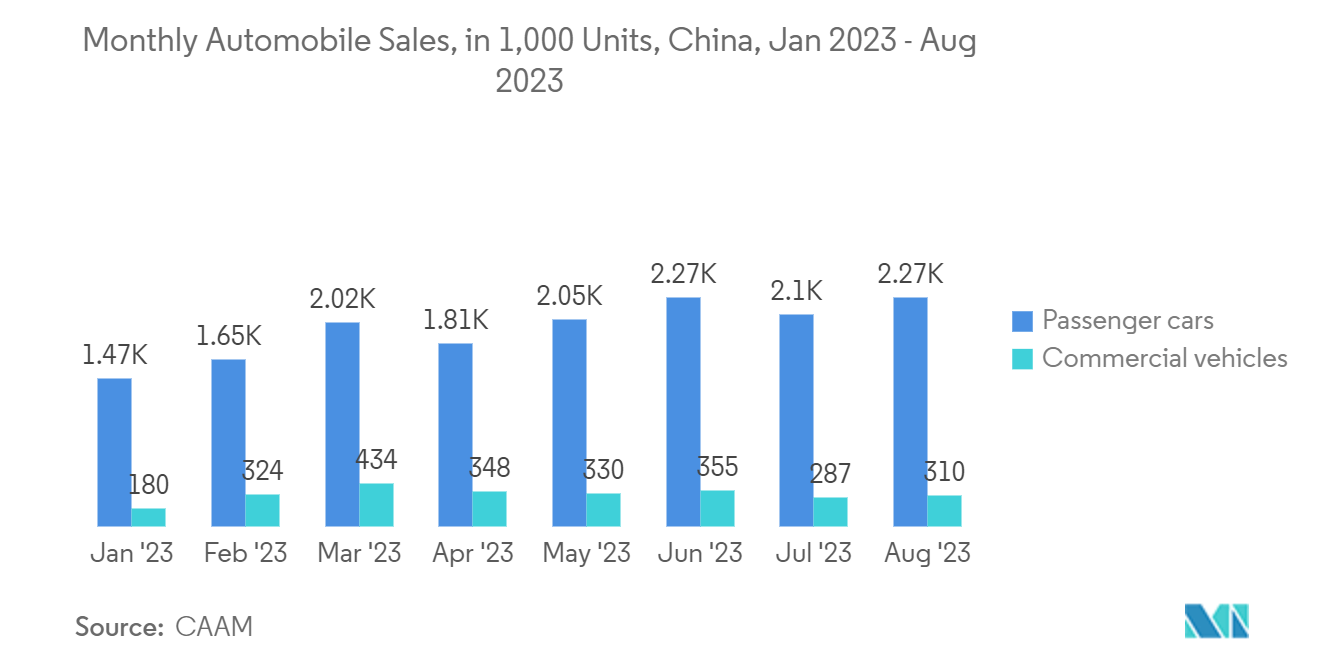Market Trends of Asia-Pacific Optoelectronics Industry
Healthcare Sector is Expected to Drive the Market Growth
- Optoelectronics devices are electronic devices that convert electrical energy into light and light into energy through semiconductors. These devices have grown significantly in the medical equipment and healthcare sector in recent years. According to NITI Aayog, there was a rapid growth in the Indian healthcare sector over the last few years. In 2022, the healthcare sector increased to USD 373 billion compared to the previous year.
- Further, the growing demand for advanced medical imagery solutions encourages vendors to launch new optical imaging solutions. For instance, in November 2022, Omnivisionlaunched the OH02B image sensor for disposable endoscopes.
- With an increasing number of light-emitting-diodes (LEDs), displays, and optical sensors being incorporated into medical equipment to aid medical professionals in diagnosis and treatment, the demand for these components is witnessing an upward trend. Major equipment manufacturers are integrating even more optoelectronic technology into their latest designs to expand these devices' range of capabilities in patient care, supporting the studied market's growth.
- For instance, OSI Optoelectronics, a significant original equipment manufacturer (OEM) solution provider in the life sciences, offers photodiodes and optoelectronics modules for various medical diagnostic and medical monitoring devices. The company's photodiodes and optoelectronic components are widely used in medical equipment, including patient monitoring systems, pulse oximeters, bone densitometers, etc.
- Furthermore, LEDs are among the significant optoelectronic product used in medical devices and across the healthcare industry. Once viewed as simple on/off indicators, LEDs have now gained the ability to displace most existing traditional lighting technologies. Another significant advantage of LED technology is its ability to dynamically change the color properties of the light, which further drives its demand in medical applications.
- Moreover, the application of laser and laser diodes have also been increasing in medical devices for various medical applications, including medical device lighting, patient alignment, soft tissue treatment, custom LED solutions for dental imaging, x-ray machines, and disinfection and sterilization. For instance, Laser diode modules enable accurate patient alignment for MRI machines, CT scanners, and X-ray systems, improving image quality by ensuring the patient is positioned correctly. According to the Statistics Bureau of Japan, the revenue from X-ray equipment in Japan reached 3.3 billion in 2022 and is predicted to reach approximately USD 3.5 billion by 2024. Such developments in Medical devices may further drive the market growth.
- Lasers are also finding increasing applications for patient treatment, particularly for soft tissues and nerves. For instance, cold laser therapy, also called low-level laser therapy or LLLT, is a medical and veterinary treatment used to treat various conditions, including nerve regeneration, soft tissue injuries, and wound healing. Moreover, the growing demand for advanced medical imagery solutions encourages vendors to launch new optical imaging solutions.

China to Experience Significant Market Growth
- The country's rapid expansion is primarily attributable to the rapidly growing consumer electronics and automobile markets. Furthermore, development in optoelectronic devices is expected in other areas, including smart city initiatives, emerging innovations including virtual and simulated reality, big data, the Internet of Things (IoT), and intelligent industrial appliances.
- The country's growing demand for smart consumer electronics further propels the studied market growth. According to the National Bureau of Statistics of China, the retail trade revenue of household instruments and consumer electronics in China reached CNY 93.79 billion (USD 14.43 billion) in November 2022, an increase from previous months, which recorded CNY 64.61 billion (USD 9.94 billion).
- Moreover, increasing development in the automobile industry in the country is expected to contribute to segment growth over the forecast period. According to the China Association of Automobile Manufacturers(CAAM), in April 2022, approximately 965,000 passenger cars and 216,000 commercial vehicles were sold in China, a slight decrease of 48% and 42% compared to the previous month. Further, it is forecasted to increase in the projection period.
- Furthermore, various market players are investing in manufacturing innovative products in the studied market, which may further drive the country's growth in optoelectronics. For instance, in September 2022, GaNo Optoelectronics Inc., a spin-off from Nanjing University in China that delivers ultraviolet (UV) detectors and modules centered on wide-bandgap semiconductors such as gallium nitride (GaN) and silicon carbide (SiC), officially launched the first commercialized SiC based extreme ultraviolet (EUV) photodiodes.
- In addition, in July 2022, Nationstar Optoelectronics, based in China, established a formal partnership agreement with Huawei to fabricate mini-LED and micro-LED display technology. The partnership is founded on complementary advantages, reciprocal benefits, and joint development principles. It will focus on both groups' fundamental technology and industrial resources. The two firms desire to conduct extensive innovation and analysis to broaden their potential economic coverage.
- Moreover, China has made considerable investments in the digital transformation of its cities. With its top-down approach to urban expansion, the country has effectively mobilized its enterprises and resources to assist its national aim of constructing smart cities. China has created smart city infrastructure that has already been applied to many of its main metropolises and sectors via public-private partnerships and the promotion of focused technical innovation. Such expansion of smart cities across the country may further propel the studied market growth.


